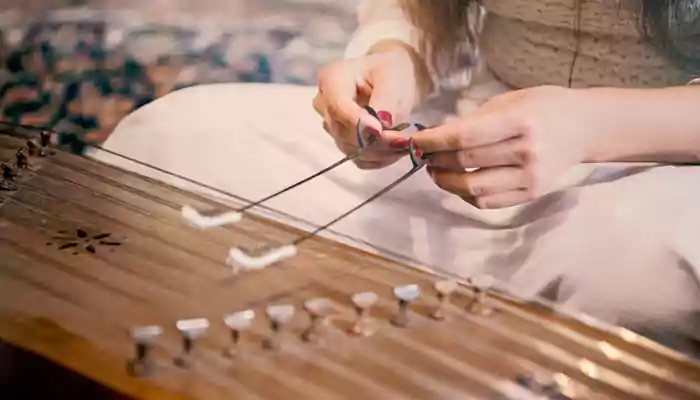Musical instruments of the crown of India – Kashmir

The beautiful picturesque land has a lot of music too
The state of picturesque snow-capped mountains, covered in a lush green blanket of forests along with the flowing water, Kashmir is heaven. But beyond the scenery that Kashmir offers, it is also highly inclined towards arts and culture. The state of Kashmir has some enticing folklores, songs, dances, and musical instruments. The crown of India has to its credit musical instruments that are unique to its core, instruments that have been to the international stages and some have been lost in the space of time. So here is a list of some of the known and unknown musical instruments of Kashmir.
Tumbaknarior the Goblet Drum
With the body made of clay, the top covered in leather, and hollow at the bottom, Tumbaknari is an essential part of the Kashmiri culture. According to historians, the Tumbaknari is believed to have been traveling from Iran and the middle-east – where it is used- since many rulers came to Kashmir back then. Interestingly, in Iran, the instrument is called Tumbakh or Tunbak. In Kashmir, the naer was added to the name owing to its tail at the end of the instrument resembling a pipe, which in Kashmiri is called a Nore. Hence giving it the name tumbaknaer
Any celebratory occasion in the state is incomplete until a few songs are played on tumbaknari. The technique of using a tumbaknari is to not close it from the bottom while striking the fingers on the top to produce rhythmic sounds as the ladies sing folklores. Be it engagement, marriage, or any ceremony, the playing of tumbaknari is considered to be auspicious. The continuous harmonious rhythm is locally called Chal Dab.
Though the instrument is still used in the so-called countries, the only difference is that in other countries it is made of wood.
Santoor
The charm and identity of the Kashmiri musical instrument, Santoor has brought a great amount of glory to the state. The Santoor is an important instrument for Kashmiri folk and Sufiyana music. It is trapezoidal in shape with 12 wires and 12 knobs on the sides. The right side of Santoor is called burn and the left Jil. The 12 wires on the right side are made of brass and those on the left are made of iron. The 12 knobs are distributed on the right and 12 on the left side with four wires fixed to each nob. And like other wire and knob instruments, the sound produced depends on the nobs.
The other instruments are Kashmiri Sarang, Rabab, Surname, Sitar, Saz-e-Kashmir, and Noet or the Earthen Pot.












